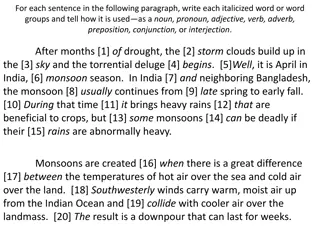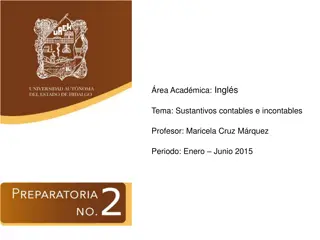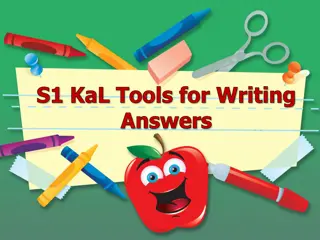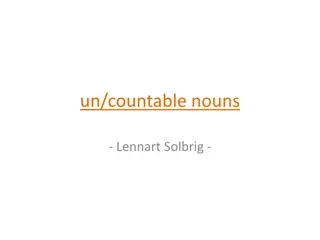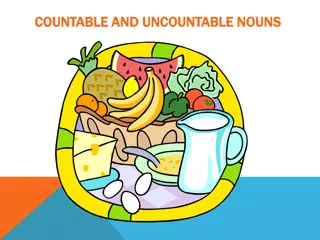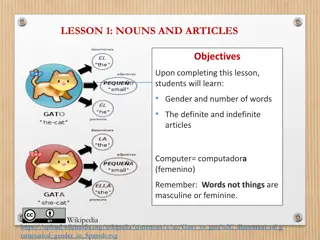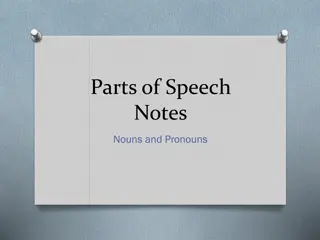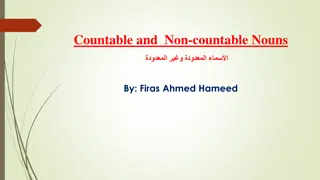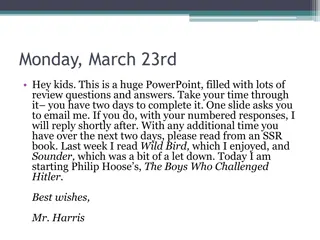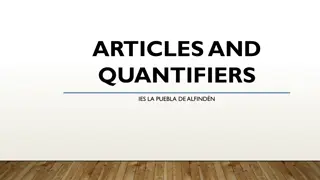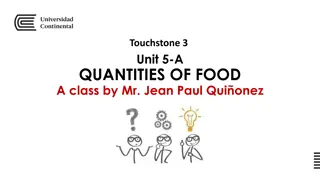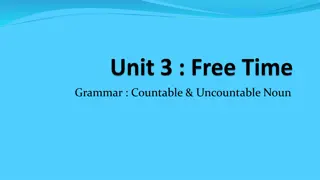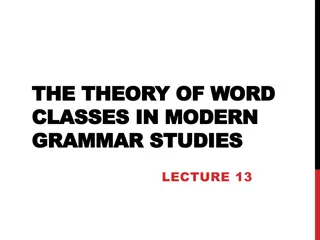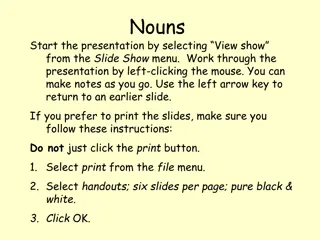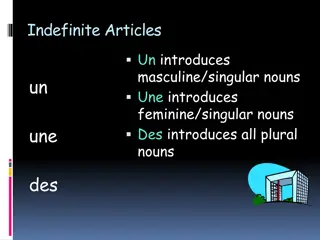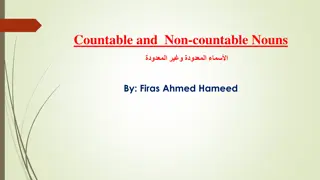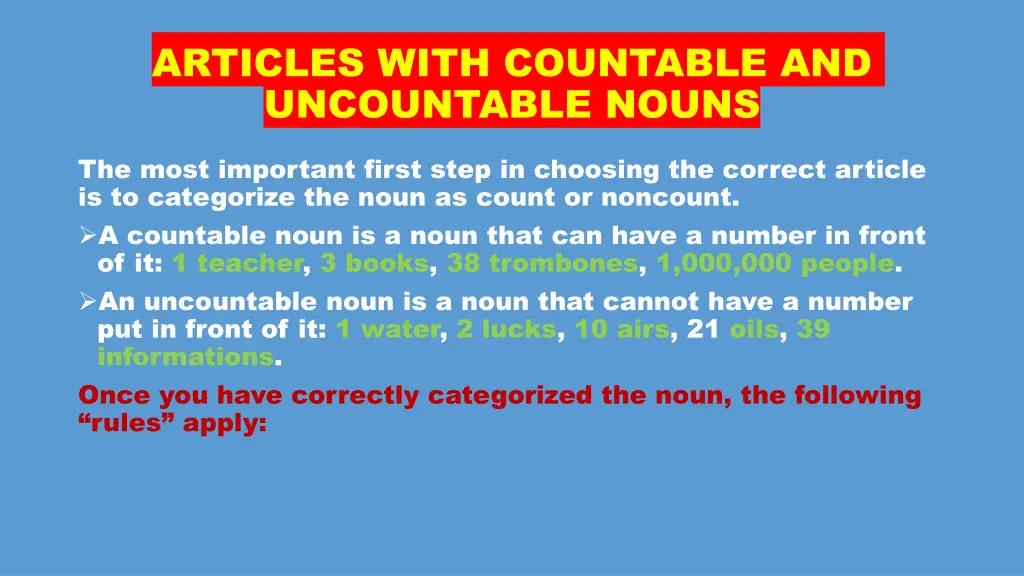
Choose Correct Articles for Countable and Uncountable Nouns
Learn how to select the right articles for countable and uncountable nouns. Understand the differences between them and when to use "a/an," "the," or no article at all. Improve your English grammar skills with examples and guidelines provided in this comprehensive article.
Download Presentation

Please find below an Image/Link to download the presentation.
The content on the website is provided AS IS for your information and personal use only. It may not be sold, licensed, or shared on other websites without obtaining consent from the author. If you encounter any issues during the download, it is possible that the publisher has removed the file from their server.
You are allowed to download the files provided on this website for personal or commercial use, subject to the condition that they are used lawfully. All files are the property of their respective owners.
The content on the website is provided AS IS for your information and personal use only. It may not be sold, licensed, or shared on other websites without obtaining consent from the author.
E N D
Presentation Transcript
ARTICLES WITH COUNTABLE AND UNCOUNTABLE NOUNS The most important first step in choosing the correct article is to categorize the noun as count or noncount. A countable noun is a noun that can have a number in front of it: 1 teacher, 3 books, 38 trombones, 1,000,000 people. An uncountable noun is a noun that cannot have a number put in front of it: 1 water, 2 lucks, 10 airs, 21 oils, 39 informations. Once you have correctly categorized the noun, the following rules apply:
ARTCLES WTH UNCOUNTABLE NOUNS
1. You cannot say a/an with an uncountable noun. FOR EXAMPLE water (NOT a water) weather (NOT a weather) music (NOT a music) 2. You cannot put a number in front of an uncountable noun. (You cannot make an uncountable noun plural.) FOR EXAMPLE a piece of news (NOT 1 news) two bottle of water (NOT 2 water) a grain of rice (NOT 1 rice)
3. You use an uncountable noun with no article if you mean that thing in general. FOR EXAMPLE I need help! I don t eat cheese. Do you like music? 4. You use the with an uncountable noun when you are talking about a particular example of that thing. FOR EXAMPLE Thanks for the help you gave me yesterday. I didn t eat the cheese. It was green! Did you like the music they played at the dance?
ARTCLES WTH COUNTABLE NOUNS
1.You can put a number in front of a countable noun. (You can make a countable noun plural.) FOR EXAMPLE two cats three pens five students 2.You can put both a/an and the in front of a countable noun. FOR EXAMPLE a book an apple the lions
3. You must put an article in front of a singular countable noun. 4. You use a plural countable noun with no article if you mean all or any of that thing. FOR EXAMPLE I don t like dogs. Do they have children? I don t need questions. Give me answers!
5. You usually use a/an with a countable noun the first time you say or write that noun. FOR EXAMPLE John has a dog and a cat. The dog is called Rover, and the cat is called Fluffy. 6. You use the with countable nouns when the second and subsequent times you use the noun or when the listener already knows what you are referring to (maybe because there is only one of that thing). FOR EXAMPLE Where s the pencil I lent you yesterday? I think the cat belongs to the new neighbors. I dropped the mp3 player and it broke. Please shut the door!
7. You use an (NOT a) when the next word (adverb, adjective, noun) starts with a vowel sound.
NOTE ARTICLES WITH COUNTABLE AND UNCOUNTABLE NOUNS
1.The above rules apply whether there is or there is not an adjective in front of the noun. FOR EXAMPLE I don t eat German cheese. Can I borrow a red pencil, please? There s an extremely large cat in the garden! I don t like small, noisy children. 2. Some nouns can be either count or noncount, depending on the context and meaning: FOR EXAMPLE Do you have paper? I want to draw a picture. (noncount = a sheet of paper) Can you get me a paper when you re at the shop? (count = a newspaper)
3. Uncountable nouns are often preceded by phrases such as: a lot of .. (luck), a piece of .. (cake), a bottle of .. (milk), a grain of .. (rice). * Instead of an article, the noun can also be preceded by a determiner such as this, that, some, many or my, his, our, etc.



